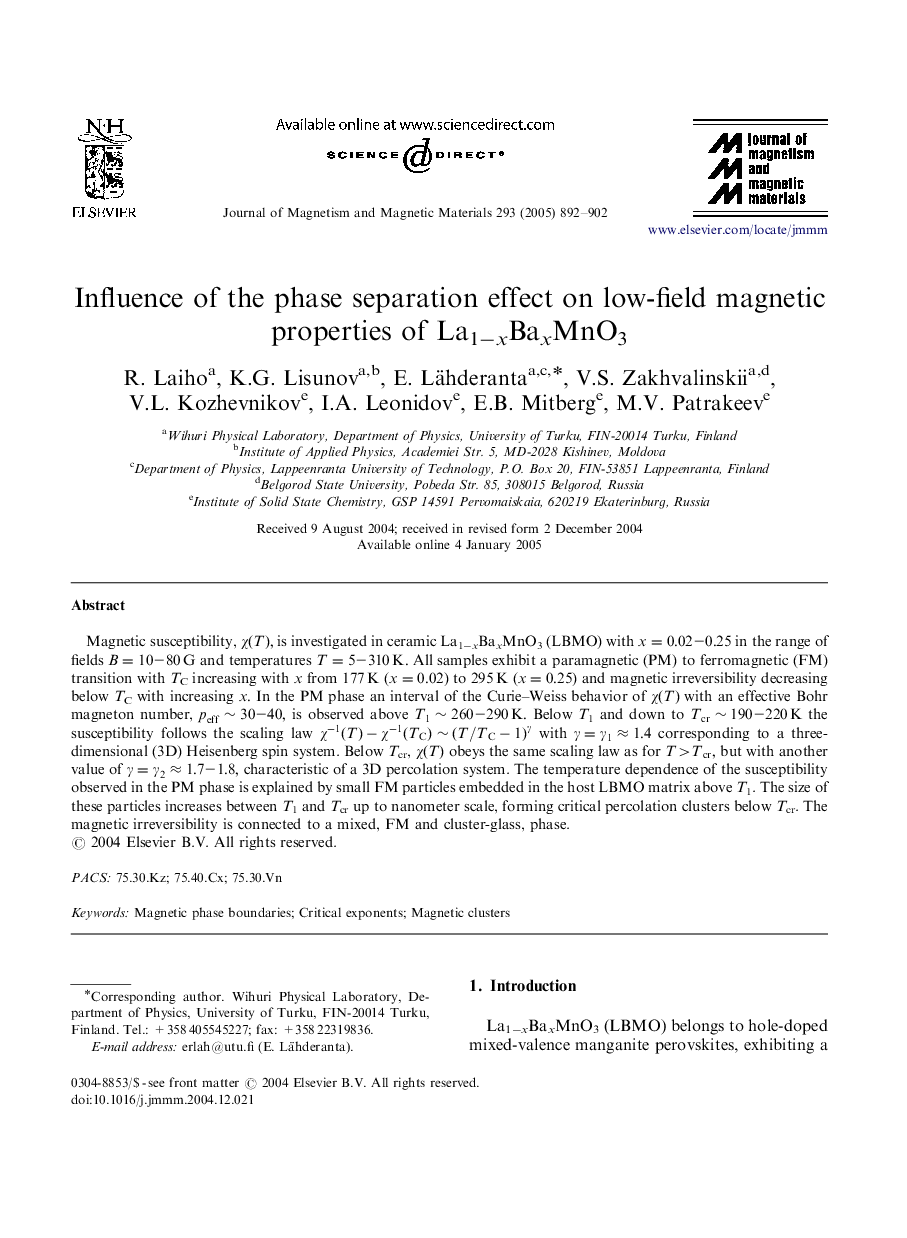| Article ID | Journal | Published Year | Pages | File Type |
|---|---|---|---|---|
| 10710213 | Journal of Magnetism and Magnetic Materials | 2005 | 11 Pages |
Abstract
Magnetic susceptibility, Ï(T), is investigated in ceramic La1âxBaxMnO3 (LBMO) with x=0.02-0.25 in the range of fields B=10-80G and temperatures T=5-310K. All samples exhibit a paramagnetic (PM) to ferromagnetic (FM) transition with TC increasing with x from 177 K (x=0.02) to 295 K (x=0.25) and magnetic irreversibility decreasing below TC with increasing x. In the PM phase an interval of the Curie-Weiss behavior of Ï(T) with an effective Bohr magneton number, peffâ¼30-40, is observed above T1â¼260-290K. Below T1 and down to Tcrâ¼190-220K the susceptibility follows the scaling law Ï-1(T)-Ï-1(TC)â¼(T/TC-1)γ with γ=γ1â1.4 corresponding to a three-dimensional (3D) Heisenberg spin system. Below Tcr, Ï(T) obeys the same scaling law as for T>Tcr, but with another value of γ=γ2â1.7-1.8, characteristic of a 3D percolation system. The temperature dependence of the susceptibility observed in the PM phase is explained by small FM particles embedded in the host LBMO matrix above T1. The size of these particles increases between T1 and Tcr up to nanometer scale, forming critical percolation clusters below Tcr. The magnetic irreversibility is connected to a mixed, FM and cluster-glass, phase.
Related Topics
Physical Sciences and Engineering
Physics and Astronomy
Condensed Matter Physics
Authors
R. Laiho, K.G. Lisunov, E. Lähderanta, V.S. Zakhvalinskii, V.L. Kozhevnikov, I.A. Leonidov, E.B. Mitberg, M.V. Patrakeev,
